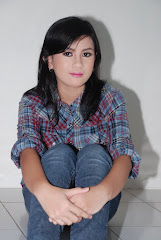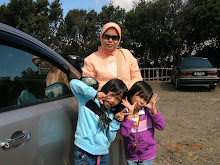Realistic mathematics education or Realistic Mathematics Education (RME) began to flourish because of a desire to review the mathematics education in the Netherlands who felt less meaningful for learners. The movement was originally initiated by Wijdeveld and Goffre (1968) through the project Wiskobas. Furthermore RME existing form until now largely determined by the views of Freudenthal (1977) about mathematics. According to his view of mathematics should be attributed to the fact, close to the child's experience and relevant to the community, with the goal of becoming a part of human values. Besides looking at mathematics as a subject to be transferred, Freudenthal stressed the idea of mathematics as a human activity. Mathematics lessons should provide opportunities for learners to "guided" and "reinvent" mathematics by doing so. Meaning in mathematics education with the primary goal of mathematics as an activity and not a closed system. So the focus should be on the activity of learning mathematics bermatematika or "matematisasi" (Freudental, 1968).
Then Treffers (1978, 1987) explicitly formulated the idea in two types matematisasi in an educational context, namely horizontal and vertical matematisasi. On the horizontal matematisasi math students are given tools that can help organize and solve problems in everyday life. Matematisasi vertical on the other hand is a process of reorganization within the mathematical system, for example, found a direct relationship of the linkages between the concepts and strategies and then implement the findings. So matematisasi departed from the realm of real horizontal toward the realm of symbols, while the vertical matematisasi move in the realm of symbol. Both forms are really no different matematisasi meaning and the same value (Freudenthal, 1991). This is caused by the signification "realistic" is derived from the Dutch "realiseren" which means not in touch with reality, but "imagine". Activities "imagine" it turned out to be more easily done if the opposite of the real world, but not always have to go through that way.
Then Treffers (1978, 1987) explicitly formulated the idea in two types matematisasi in an educational context, namely horizontal and vertical matematisasi. On the horizontal matematisasi math students are given tools that can help organize and solve problems in everyday life. Matematisasi vertical on the other hand is a process of reorganization within the mathematical system, for example, found a direct relationship of the linkages between the concepts and strategies and then implement the findings. So matematisasi departed from the realm of real horizontal toward the realm of symbols, while the vertical matematisasi move in the realm of symbol. Both forms are really no different matematisasi meaning and the same value (Freudenthal, 1991). This is caused by the signification "realistic" is derived from the Dutch "realiseren" which means not in touch with reality, but "imagine". Activities "imagine" it turned out to be more easily done if the opposite of the real world, but not always have to go through that way.












0 komentar:
Posting Komentar